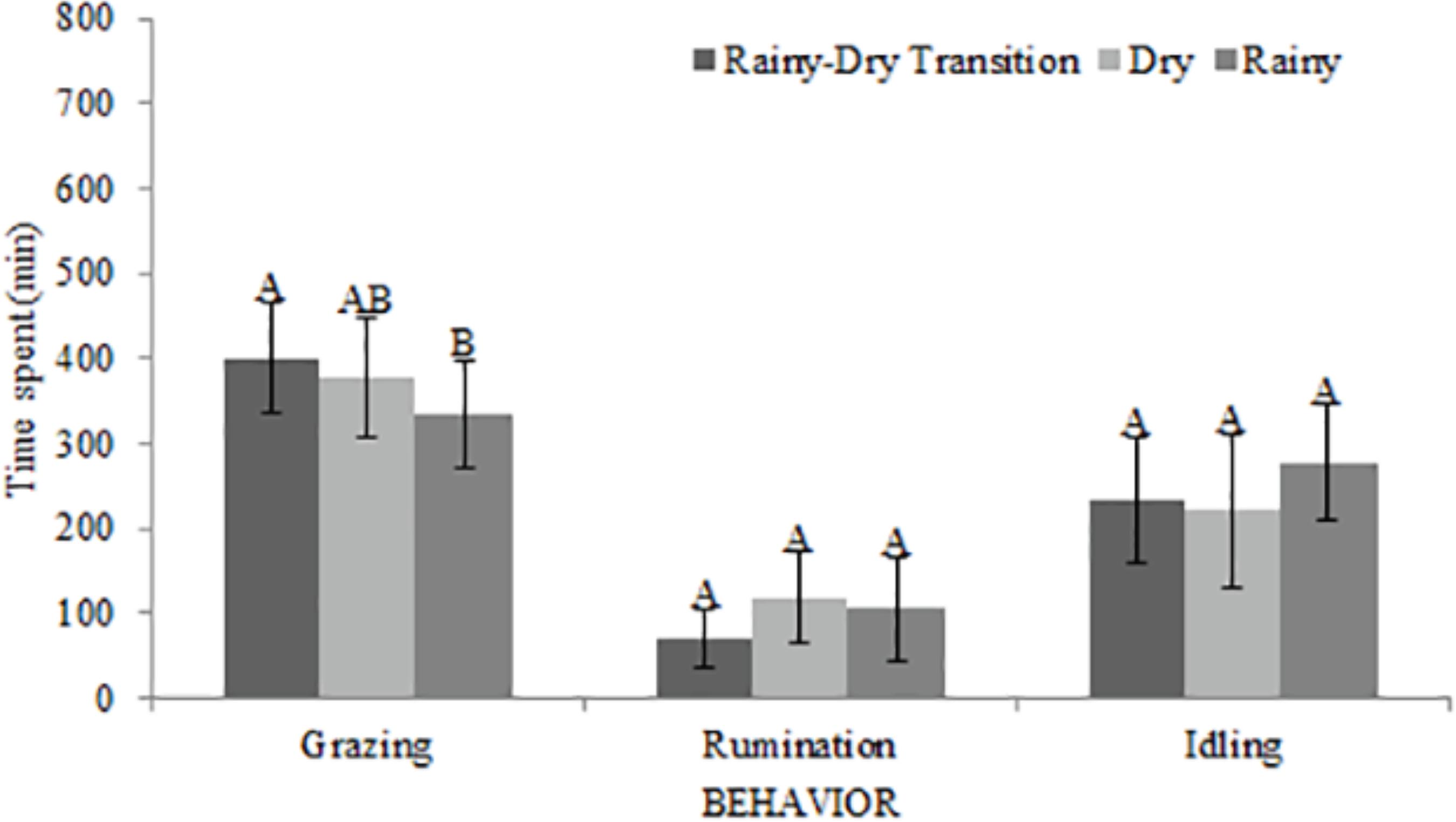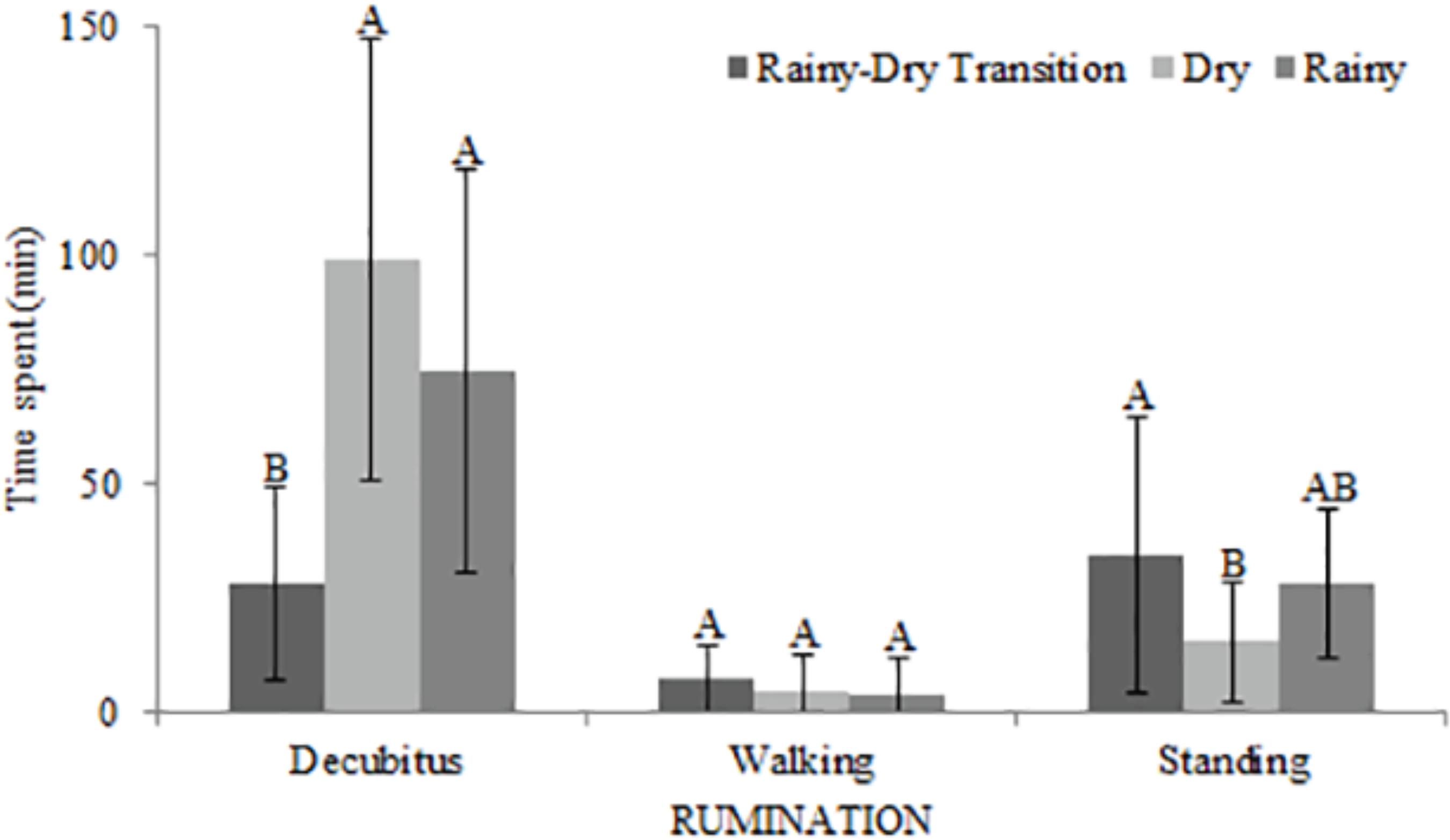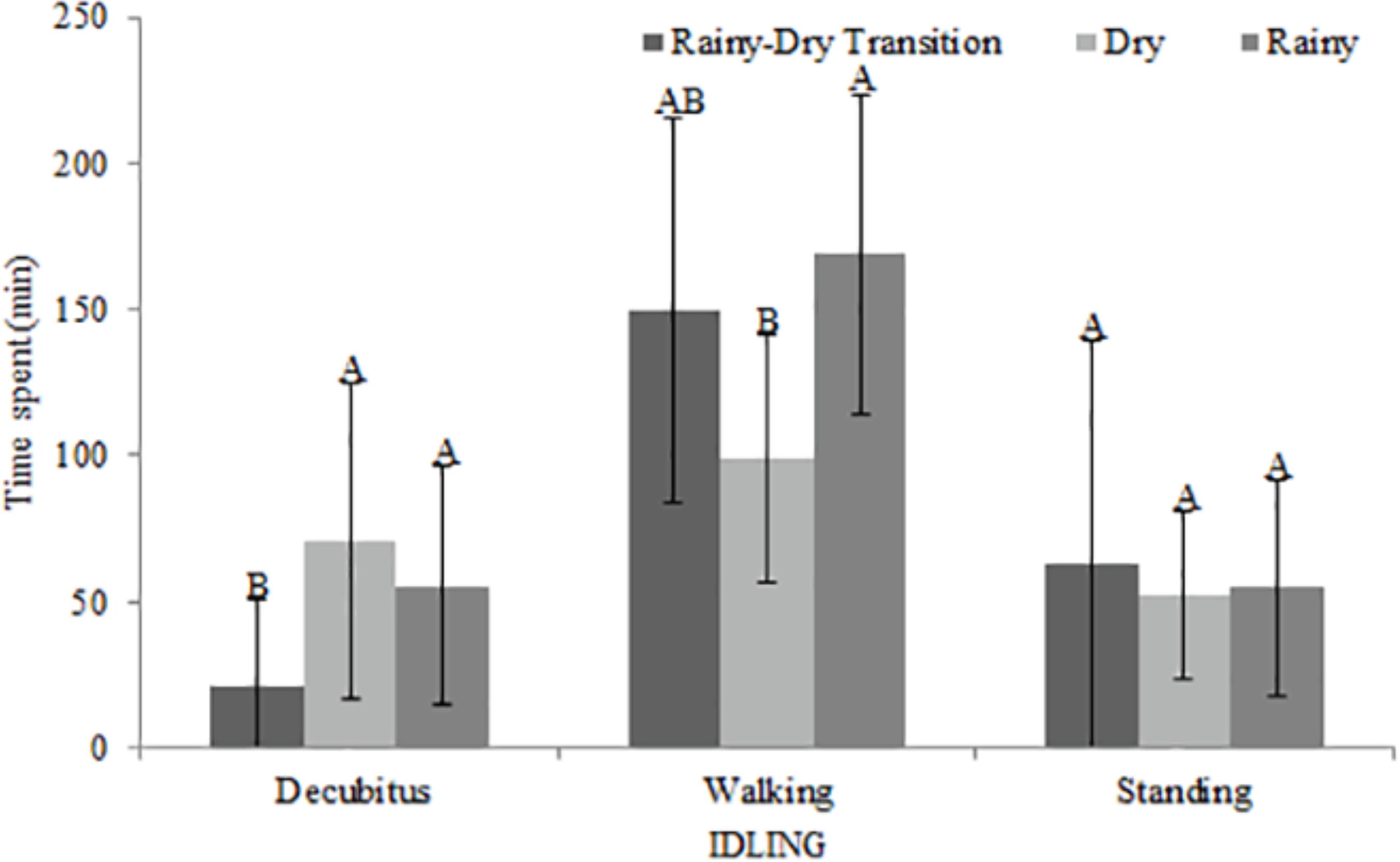Abstract
This study aimed to assess the ingestive behavior and feeding preference of goats reared in degraded Caatinga (dry tropical forest) during three seasons: transition (rainy-dry), dry, and rainy seasons. The experiment was carried out at the UFPB Experimental Station in São João do Cariri, PB, Brazil. Six male goats kept on pasture with an area of 3.2 hectares were used. The animals were assessed through continuous visual observation. The experimental design was completely randomized, with three treatments (rainy-dry, dry, and rainy seasons) and six replications (animals). Means were submitted to the Tukey test at a 5% level. The time www.revistas.ufq.br/vet spent by animals during the transition season (rainy-dry) had to cite in the article page. similarities for the selected grasses, herbaceous/sub-shrub plants, litter, and shrub/ tree plants, except for bromeliads and cacti. The animals spent longer grazing time consuming grasses at the rainy season. During this season, marmeleiro (Croton hemiargyreus Mill. Arg.) was the most selected species in relation to catingueira (Caesalpinia pyramidalis Tul.) and pereiro (Aspidosperma pyrifolium Mart.). The time spent for grazing activity during the transition season (rainy-dry) was longer than the rainy and dry season. Goats reared extensively in the Caatinga have high plasticity in their eating habits and can behave as grazing or browsing animals.
Keywords:
idling; grazing; ruminant; selectivity; semiarid





